Black Medic
Biology: Black Medic (Medicago lupulina) is a summer annual (or less commonly a winter annual) broadleaf weed that can be found throughout the United States. Seeds germinate in the spring and are capable of establishing in drought-prone or disturbed soils. Black medic is a legume, meaning that it has the capabilities to fix its own nitrogen; thus, allowing it to out compete turf in nutrient-poor soils as well. These factors, in combination with its ability to tolerate low mowing heights, make black medic a common weed in lawns and other high-maintenance turf throughout Indiana.
Identification: Black medic has low-growing, prostrate, somewhat square stems that extend underneath the turf canopy to lengths up to 2 feet long. Despite the production of these invasive stems, it germinates from seed in early autumn or spring. Black medic stems do not have the ability to root as they establish; however, the plant is well-anchored by a deep, central taproot. The leaves are trifoliate (3 leaves), dull green on the top, pale green below, wedge-shaped, as long as they are broad, toothed near the tip, and display a projecting tip or spur at the apex. Black medic can often be mistaken for oxalis (yellow and creeping woodsorrel) and white clover which also have very similar trifoliate leaf arrangements. However, the leaf stem (petiole) of the center leaf in black medic is slightly longer than the two lateral leaves, thus distinguishing it from oxalis and white clover. Black medic produces a very tight, compressed cluster of small yellow flowers in the spring and until the fall. Once the flowers mature, they form a very tightly coiled black seedpod, hence the name ‘black medic’.
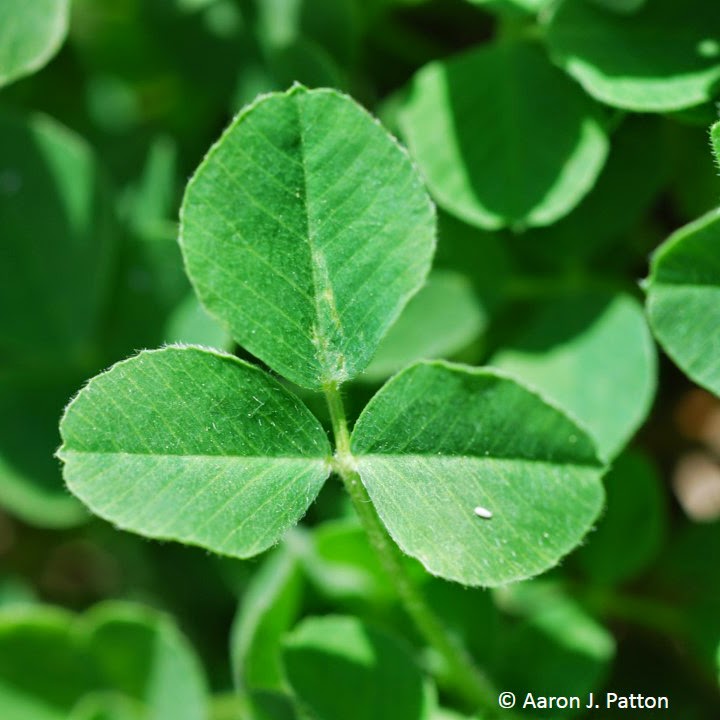 |
| Oblong leaves are as wide as they are long. With a notch (spur) at the leaf tip. |
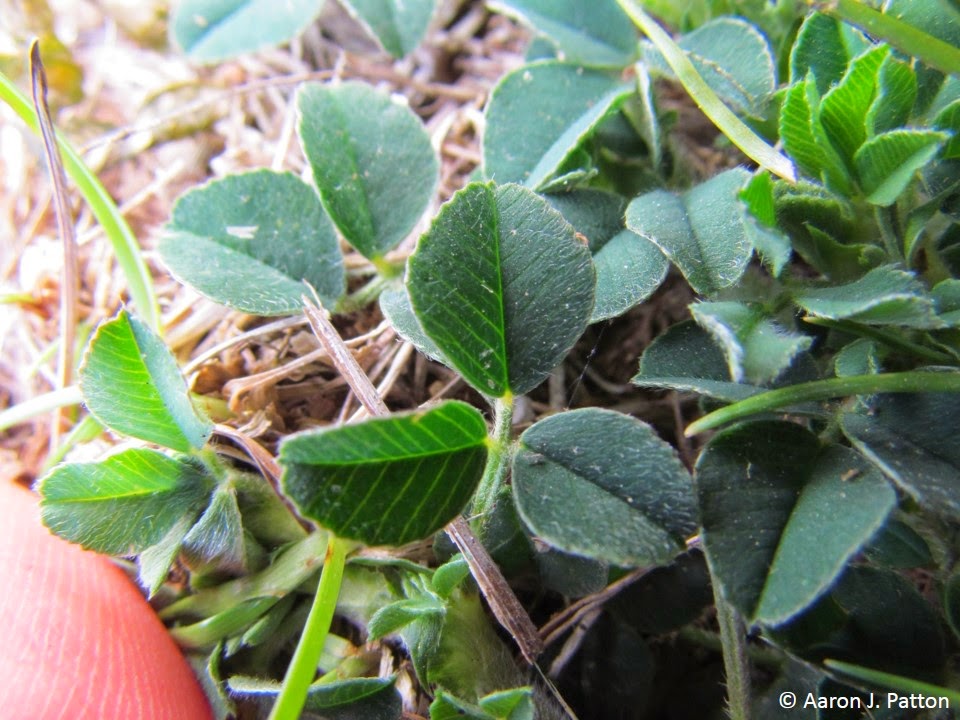 |
| Trifoliate (3-leaves), wedge shaped leaves |
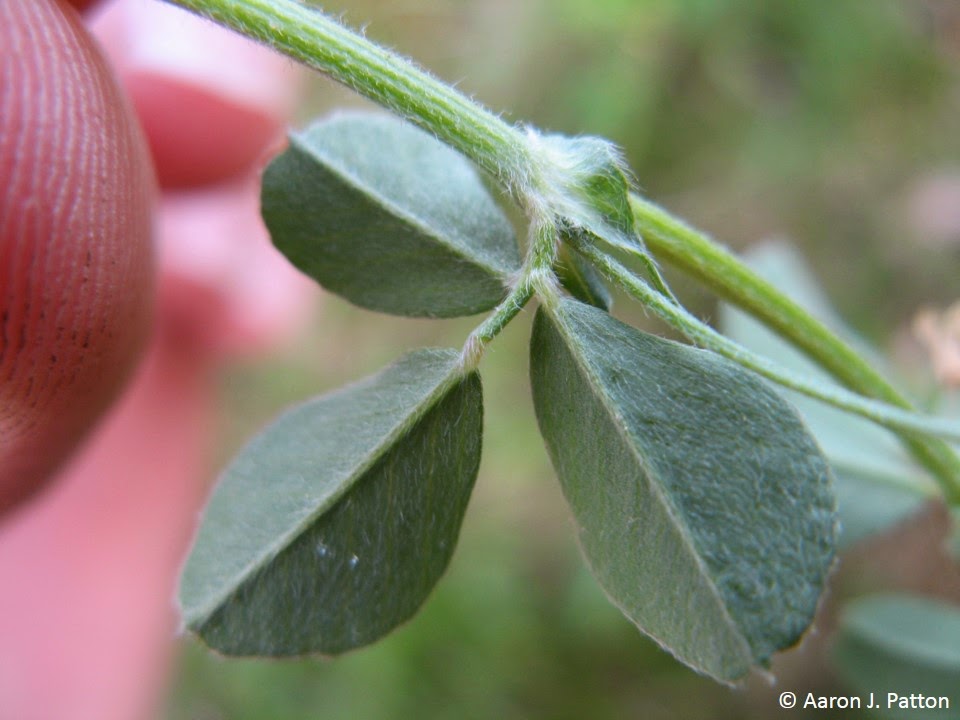 |
| Center leaf has a longer petiole (leaf stem) than the two lateral leaves |
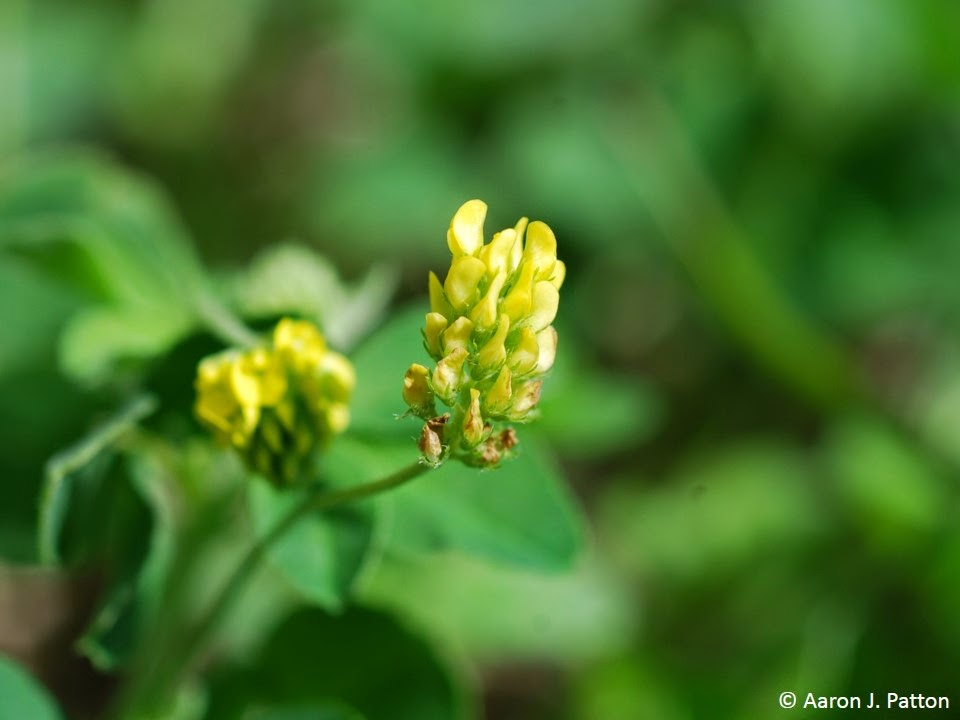 |
| Small cluster of yellow flowers |
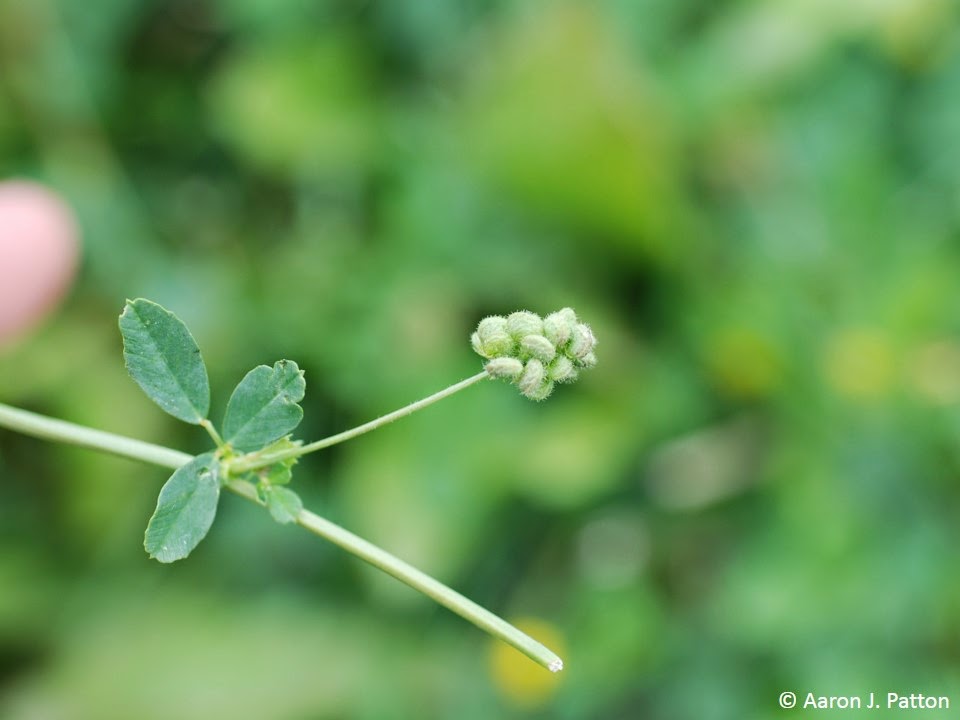 |
| Immature seedpod |
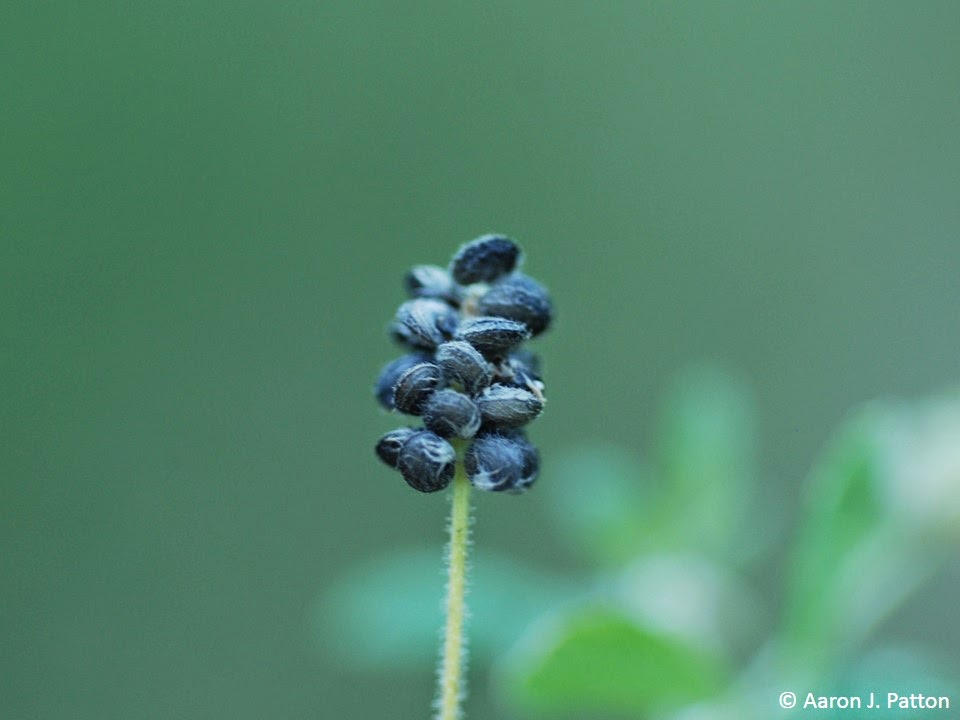 |
| Cluster of blackened mature seedpods |
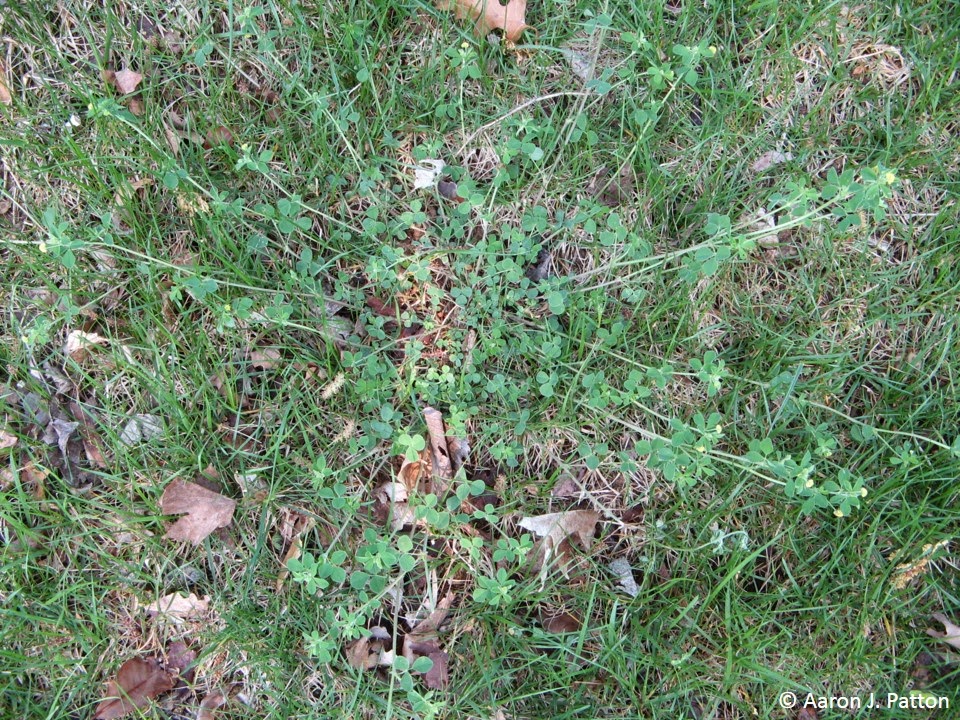 |
| Spreads by low-growing prostrate stems |
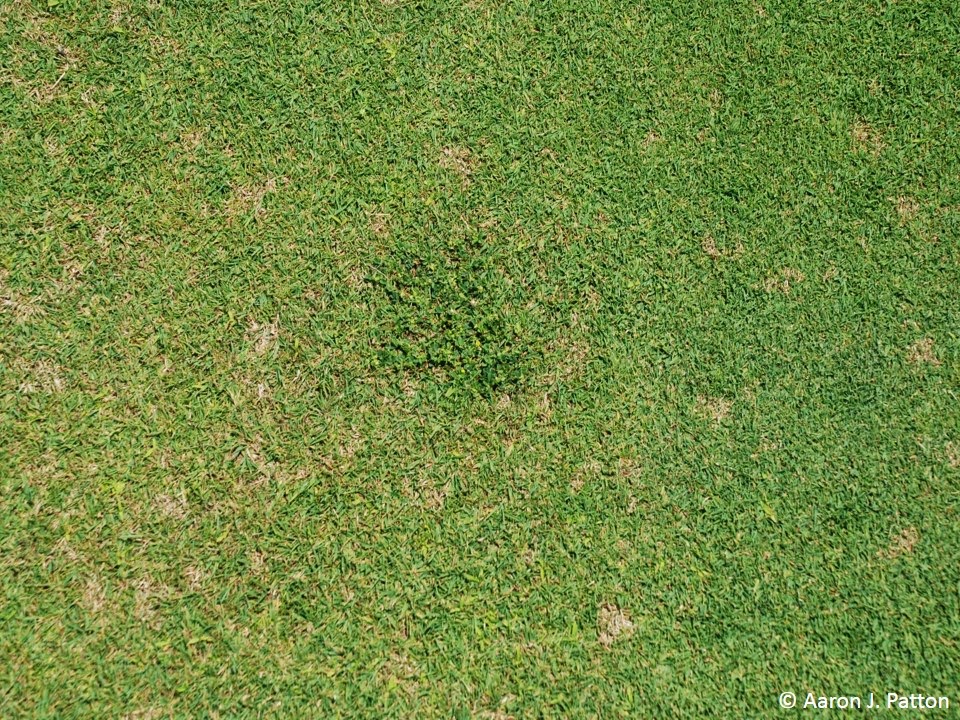 |
| Black medic can tolerate low mowing heights |
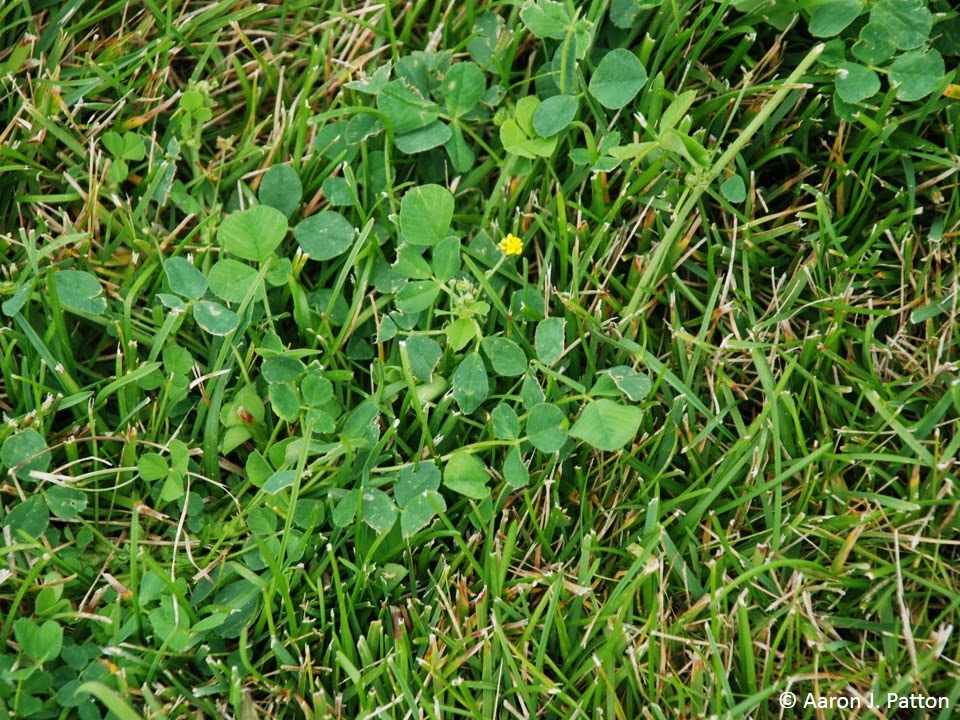 |
| Black medic invading cool-season turf |
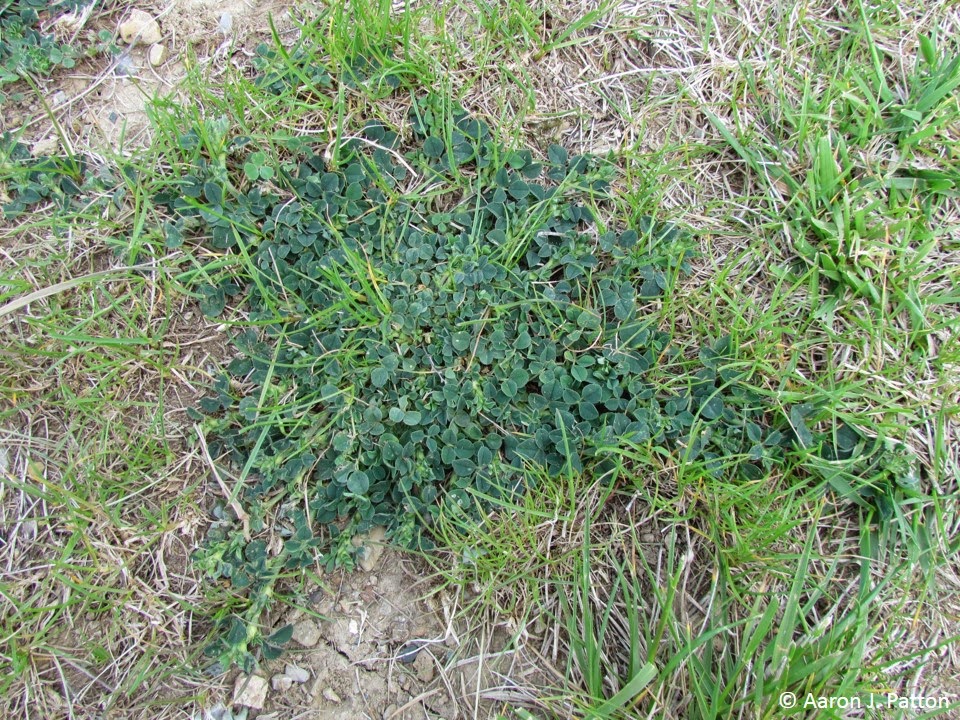 |
| Presence of black medic could indicate dry soils or low fertility |
Cultural control: The use of cultural practices to increase turf competition may help to manage invading weeds like black medic. Black medic is not shade tolerant, therefore the development of a thick, dense turfgrass canopy may improve competition. Additionally, black medic is a legume capable of fixing its own nitrogen; as a result, adequate nitrogen fertilization techniques will help to manage the weed and further develop a more competitive turf. The presence of black medic in the field may also indicate a particularly dry soil in need of irrigation. Black medic can also be easily pulled by hand if populations are small enough, though it is important to remove as much of the taproot as possible. Hand-weeding should be done when the plant is in the early growing stages, especially before it produces viable seed.
Biological control: None known for specific use in black medic. There are some organic postemergence herbicides available for turf weed control such as pelorgonic acid (Scythe), acetic acid (5% or greater solutions), and medium-length fatty acids (Eugenol); however, these products do not differentiate between the target weed and the desired turf (non-selective). As a result, these products are often used as spot treatments for weed control in parking lots, along fence rows, and in other bare-ground areas. Other organic products that contain essential micronutrients such as iron HEDTA (FeHEDTA), may be used to manage black medic; however, their ability to control black medic has not been adequately researched.
Chemical control: Chemical management of black medic is generally focused on a postemergence strategy over a preemergence strategy. The best postemergence management strategy is to apply two- or three-way mixtures of 2,4-D, dicamba, MCPP, or MCPA. Other options for selective control may include products such as Turflon Ester (triclopyr) or Drive (quinclorac) which may require multiple applications for adequate control.
Aaron Patton, Turfgrass Extension Specialist
Leslie Beck, Postdoctoral Research Associate
